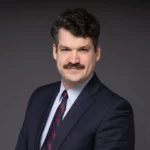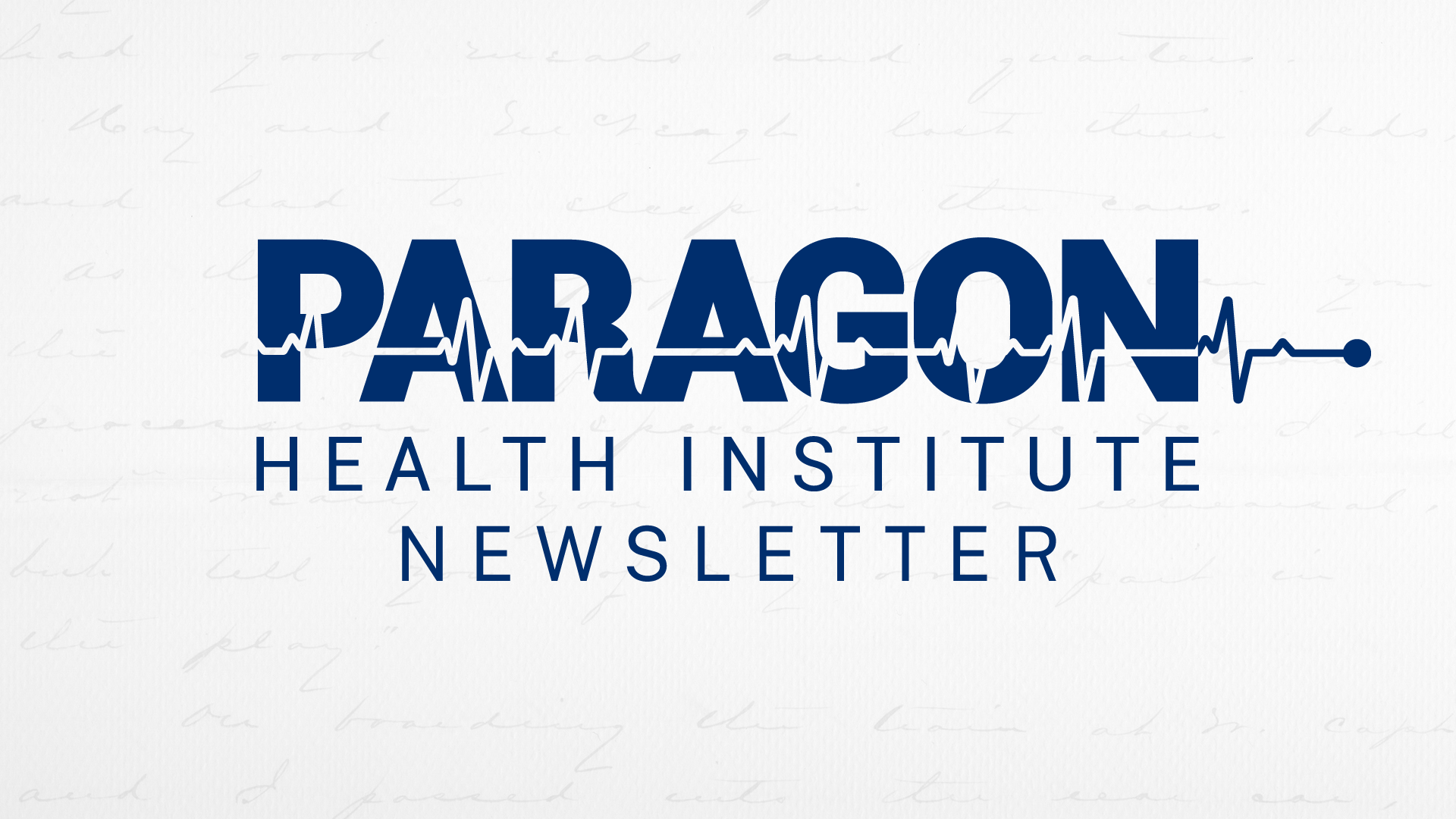On March 20, 2023, Paragon’s Theo Merkel submitted a response letter to the Senate Committee on Health, Education, Labor and Pensions addressing the shortage of health care workers.
Chairman Sanders and Ranking Member Cassidy:
Thank you for your request for information on the drivers of and potential solutions for health care workforce shortages.
To the extent that the United States is suffering from a health care workforce shortage, it is largely self-inflicted by decades of misguided public policy. Thankfully, there are plenty of opportunities for stakeholders, including both federal and state lawmakers, to improve upon the present circumstance. However, Congress should be wary of recommendations that double down on the same programs that, despite 40 to 50 years of taxpayer financing, have still failed to produce compelling evidence of their effectiveness.
1. Relax current bottlenecks in training of clinical workforce.
One side effect of relatively high compensation for health care professionals in the United States is that there is no shortage of individuals who want to join the health care workforce. But each year, tens of thousands of prospective clinicians are turned away at various stages of the training pipeline.
Medical schools: For the 2022-23 year, the American Association of Medical Colleges (AAMC) reported that 55,188 prospective physicians applied to medical school, but only 22,712 were ultimately enrolled. In fact, medical schools have only enrolled between 36 and 42 percent of applicants for the past decade, compared to the modern high of 60 percent in 1988.1
While certainly not every medical school application is of a quality worthy of acceptance, data made available by the AAMC indicates matriculations are more correlated to supply of medical school opportunities than other quality metrics. For instance, only 36 percent of applicants matriculated in 2021, but those who did had on average higher Medical College Admission Test (MCAT) scores and grade point averages (GPAs) than those in 2018 when 42 percent of applicants were enrolled.2
The Liaison Committee on Medical Education is responsible for accrediting new allopathic medical schools and the Commission on Osteopathic College Accreditation for new colleges of osteopathic medicine. It is true there has been an increase in medical schools and enrollment since the ill-advised 25-year pause on increasing medical school enrollment ended in 2005,3 but as lagging acceptance rates indicate – there is still more qualified demand than present supply.
Residency programs: In 2023, 42,952 prospective physicians applied for a residency, but only 34,822 “matched” to a first-year position (81 percent).4 This represents a significant improvement from 2009, when only 71 percent of applicants found a “match” with a residency, but the lack of credentialed residency opportunities continues to be a key bottleneck in the physician training pipeline.5
A common misconception is that hospitals do not add residency slots because Congress capped the number of residency slots subsidized by Medicare in 1997 (only just recently, the Consolidated Appropriations Act of 2021 [P.L. 116-260] added another 1,000 Medicare-funded residency slots over five years). In reality, evidence suggests that the cap on Medicare-funded residency slots did not impact the growth of total residency slots. From an Institute of Medicine report on the subject in 2014:
“Many hospitals have expanded their teaching programs despite the cap…There is no way to know whether the growth in positions would have been significantly greater, as some argue, without the caps. However, the available evidence shows that, for the last decade, the number of training positions has grown at the same pace as the period before the caps.”6
Even without additional federal funding, hospitals have a strong financial incentive to add or increase the size of their residency programs. This is because residents provide hospitals highskilled but relatively cheap labor.7 However, before a hospital can add even a privately financed residency slot, it needs approval by the Accreditation Council for Graduate Medical Education.
Foreign trained doctors: Foreign trained doctors comprise an important part of the physician workforce, as over one in four active physicians attended medical school outside the United States. While this is higher than the 18 percent average of other countries for which the OECD has data available, foreign trained doctors make up a larger percentage of the physician workforce in countries such as Sweden (29 percent), the United Kingdom (30 percent), and Switzerland (38 percent).8 As highlighted in a joint report published by the Departments of Health and Human Services, Labor, and Treasury in 2018, these individuals face additional hurdles to practicing medicine that sometimes includes duplicative examinations, more limited residency opportunities, caps on visas and green cards, and large fees.9
Nursing schools: There are also more qualified nursing applicants than available placements in nursing schools. Nurses require less education and training than physicians, and their reimbursement is less influenced by government programs. This shorter lag time and greater influence of market prices for labor means nursing supply should be more responsive to demand than the physician workforce. While the supply of nurses is more responsive to demand, acceptance into accredited nursing programs is a key bottleneck.
In 2014, only 44.9 percent of applications were accepted to baccalaureate programs.10 In 2021, 91,938 applications that were “qualified” according to the American Association of Colleges of Nursing were turned down by nursing schools.11 Nursing schools are primarily accredited by the Accreditation Commission for Education in Nursing and the Commission on Collegiate Nursing Education.
Recommendations: To the extent Congress tolerates monopolies or near monopolies in the accreditation of medical schools, residency programs, and nursing schools, etc. – it should demand accountability for why such large gaps between the aspiring clinicians and those accepted into accredited programs have persisted for decades.
While new programs will not launch overnight even if the accreditors are pushed to be more responsive to our country’s health workforce needs, more immediate action should be taken to allow additional foreign trained doctors to enter and stay in the United States. These are doctors ready and willing to provide care in the United States but have often been stuck waiting as Congress waits decades to rationalize our immigration policies more broadly.
2. Do not expand federally funded programs with limited evidence of effectiveness.
The vast majority of federal support for clinical workforce goes to programs that are decades old and were never designed to be efficient force multipliers.
Medicare Graduate Medical Education: By far the largest source of federal assistance for health care workforce training is the Medicare Graduate Medical Education (GME) program by which the federal government pays hospitals an average of over $170,000 per eligible resident per year.12 The total funding was about $16 billion in 2020.13 Much ink has been spilled on how the current reimbursement varies significantly from hospital to hospital,14 is geographically biased,15 and is not correlated to the actual cost of training residents.16 These issues reflect that it was designed in the early 1980s to accommodate legacy programs rather than to respond to actual workforce needs.
As described in Medicare Prospective Payment and the Shaping of U.S. Health Care, during the overhaul of Medicare reimbursement to hospitals in 1983 teaching hospitals (largely concentrated in the Northeast) objected to the originally proposed cost-based adjustment to Medicare payment for graduate medical education. In response, the authors of the legislation simply doubled the proposed amount. In the words of the Assistant Secretary for Policy and Planning at the Department of Health and Human Services (HHS) at the time of the transition:
“Were we overly generous on the teaching adjustment? Sure. I’ve said publicly innumerable times that the real number was not two [a doubling]. I mean, any fool would know that two is a totally made-up number, but it was close to two…That made the teaching hospitals reasonably happy and it gave us a very important part of New York’s political delegation, including [Pat] Moynihan and Charlie Rangel.”17
It should be no surprise then that the Medicare Payment Advisory Commission (MedPAC) continues to note that a significant portion of GME payment is not empirically justified. It is also not surprising that, as noted above, there is no evidence that limiting growth in Medicarefinanced residency slots limited the growth of overall residency programs.
Recommendation: There are numerous18 ways19 GME could be reformed20 to at least make it more efficient, but unfortunately any broader changes are unlikely in the immediate term as the politics supporting the inefficient status quo have not changed much since 1983. For now, Congress should just avoid further expanding a program whose underlying framework was never appropriately designed to meet its purported goal in the first place.
National Health Service Corps: The National Health Service Corps (NHSC) enrolled its first participant over 50 years ago. Unlike Medicare GME, the purported purpose of the NHSC is not to increase the number of clinicians but rather to encourage more desirable distribution of clinicians across the United States with an aim on expanding supply in underserved areas. Like GME, even after decades of taxpayer financing, there is little evidence the program has been
successful.
Most advocacy around the NHSC focuses on the number of participants and the amount they have saved in loan repayment. For example, the website of the Health Resources and Services Administration (HRSA), the agency that runs the NHSC program, predominantly touts the impact of “more than 20,000 NHSC members providing care to more than 21 million.”21 This provides no information about the number of providers who would serve in a “health professional shortage area (HPSA)” in the absence of the program or how many additional patients receive care.
Another commonly cited statistic is that 84 percent of those who fulfilled their service commitment continue to practice in a HPSA for at least one year after their obligation is completed.22 However, even this is misleading. A 2016 analysis paid for by the Department of Health and Human Services (HHS) found that a primary care provider was more likely to continue practicing in a HPSA if they had not received NHSC support than if they had. There could be many reasons for this – for instance, it is logical that someone who is willing to go to a HPSA without financial inducement could have stronger reasons for staying there than someone who is. But it brings focus to the question of how many participants in the NHSC are receiving financial benefit for something they would have done anyway. The same study attempted to answer this question but conceded their “estimates should be viewed with caution” due to “important (and insurmountable) data challenges.”23
Recommendation: Since there is not compelling evidence of the effectiveness of the NHSC after 50 years of experience, it is likely there will be none forthcoming anytime soon. However, the American Rescue Plan (ARP; P.L 117-2) recently dedicated an additional $800 million for an expansion of NHSC. This amount is more than enough to reinforce the lessons of the past 50 years and should not be increased further. If a better plan to evaluate the effectiveness of the expansion and underlying appropriation is not developed and implemented, Congress should consider rescinding any remaining funds.
3. Encourage a more efficient workforce.
In the recently released Report to Congress, MedPAC noted the following:
“The supply of most types of clinicians has been growing in recent years, although the composition of the clinician workforce continues to change, with a rapid increase in the number of advanced practice registered nurses and physician assistants, steady increase in the number of specialists, and a slow decline in the number of primary care physicians.”24
Non-physician clinicians are an important part of the health workforce, and the importance of these roles has only increased due to the restrictions that have limited the growth in the number of physicians. It is commonly noted that the U.S. has fewer doctors per capita (2.6 per 1,000 population) than the average (3.6) of members in the Organisation for Economic Co-operation and Development (OECD),25 but there are actually more nurses per capita (12 per 1,000 population) than the average OECD nation (8.8).26 In particular, advance practice nurses have seen dramatic growth from 120,000 in 200727 to over 350,000 in 2022.28
Advanced practice nurses can and do provide much of our nation’s primary and routine follow-up care, when and where state rules let them. As noted by the Institute of Medicine in 2011:
“Evidence suggests that access to quality care can be greatly expanded by increasing the use of [registered nurses] RNs and [advanced practice registered nurses] APRNs in primary, chronic, and transitional care…yet in many cases, outdated regulations, biases, and policies prevent nurses, particularly APRNs from practicing to the full extent of their education, skills, and competencies.”29
Many states already allow for independent practice of nurse practitioners, especially in the rural western states and New England. However, over 20 states still restrict the extent to which nurse practitioners can provide care independently.30
Physician assistants provide another opportunity for expanding access to care providers. Many states enabled physician assistants greater flexibility to provide care in 2020, and some rural states have since moved to make these changes permanent.31 According to the Bureau of Labor Statistics, there were over 130,000 physician assistants in the United States in 2021.32
Recommendations: While many of the barriers to non-physician clinicians providing care up to the extent of their education and training are at the state level, the federal government is not without options. At the federal level, Congress should consider revisiting any remaining Medicare payment rules that require physician supervision requirements exceeding those in state law and improving transparency and efficiency by ending “incident to” billing that prevents these providers from directly billing the program in certain circumstances.33
4. Eliminate barriers to, but do not force, technology
Productivity growth in health care has notoriously lagged behind other sectors of the economy, largely due to its labor-intensive nature.34 However, while adoption of labor-saving technologies may be traditionally more limited in health care, there have been promising developments in recent years. But technology is not a panacea, and Congress should appreciate the expensive lessons of the HITECH Act of 2009 (Title XIII of P.L. 111-5).
Telehealth: The dramatic expansion of telehealth usage during the COVID-19 pandemic has helped provide evidence of its promise as a potential way to improve access and enhance productivity in health care. In 2021, McKinsey released a claims-based analysis that found that telehealth could replace 24 percent of in-person visits35 and the Journal of Medical Internet Research highlighted a survey of physicians that indicated that over 44 percent of currently inperson visits could instead be effectively conducted via telehealth.36 Paragon Health Institute plans to release a separate paper about how the pandemic impacted telehealth trends as well as how lawmakers can facilitate adoption of telehealth in a way that balances the promise of this technology with safeguards to prevent exploitation for waste, fraud, and abuse.
Artificial intelligence: The adoption of artificial intelligence (AI) in health care has been slow, with some notable exceptions such as complex image analysis in the fields of radiology37 and ophthalmology.38 A recently published National Bureau of Economic Research (NBER) working paper estimated more widespread adoption of AI technology could reduce administrative costs by 7 to 14 percent and medical costs by 5 to 8 percent.39 A 2022 report by Brookings on AI identified regulatory barriers and misaligned payment incentives as two key barriers hindering adoption in health care.40
Electronic health records: In 2009, then President-elect Barack Obama justified the forthcoming $36 billion expenditure of taxpayer dollars on electronic health records (EHRs) by saying:
“This will cut waste, eliminate red tape, and reduce the need to repeat expensive medical tests. It just won’t save billions of dollars and thousands of jobs – it will save lives by reducing the deadly but preventable medical errors that pervade our health care system.”41
While adoption did spike due to the massive federal investment (hospital adoption of EHRs increased from 9 percent to 96 percent over ten years),42 former President Obama himself was perhaps the best in summing up the discouraging results upon reflection in 2017.
“The fact that there are still just mountains of paperwork…and the doctors still have to input stuff, and the nurses are spending all their time on all this administrative work. We put a big slug of money into trying to encourage everyone to digitalize, to catch up with the rest of the world…that’s been harder than we expected.”43
Recommendations: Congress should focus on relieving regulatory and payment barriers that unduly restrict adoption of labor-saving technologies. However, it should refrain from large taxpayer investments or the forced adoption of specific technologies by health care providers as it did with EHRs.
5. Reduce reliance on price controls
Beyond supply constraints, the Medicare fee schedule is another significant factor that contributes to workforce shortages and maldistribution of workforce resources across geographic areas and specialties. Congress has given the Centers for Medicare and Medicaid Services (CMS) and the many stakeholders on whom it relies for advice the impossible task of determining the appropriate value of almost all health care goods and services across the entire economy. Not only is this impossibly complex, it has predictable flaws.
The noble goal of the currently designed payment is to appropriately reimburse providers for the cost of providing a service plus a small profit margin. Even if CMS’s staff and outside experts somehow managed set the “correct” price for everything to achieve this goal, a system ultimately designed to simply reimburse providers for the cost of doing business will never appropriately anticipate future needs or opportunities. However, it does create powerful advocates for maintaining the status quo, and the current rulemaking process provides the levers for defending it. The negative impact on workforce is only one of the most acute and currently noticeable ways this problem manifests itself today.
Unlike in other sectors of the economy, the largest payer of health care services in the United States will not increase wages to lure prospective workers or subsets of workers into areas of high need or demand. Congress attempts to compensate with a discretionary grant program or a demonstration project here or there, but the political process is far too slow and influenced by too disparate constituencies – making such substitutes late and inefficient at best but more often completely counterproductive.
Recommendations: As Congress oversees the long, torturous transition away from fee-for-service, it should favor responsible payment that remains flexible in the face of changes in need, demand, and innovation while limiting bureaucratic hurdles. Congress should also avoid narrowly targeted and prescriptive grant programs that, by the time of passage and implementation, will likely be solving yesterday’s problem and creating another special interest dedicated to perpetuating the funding whether it is effective or not. In the meantime, it is worth considering whether updates to the relative value units in the physician fee schedule should more explicitly factor in future workforce needs.
Thank you again for your solicitation of input.
Sincerely,
Theo Merkel
Director, Private Health Initiative
Senior Research Fellow
Paragon Health Institute





